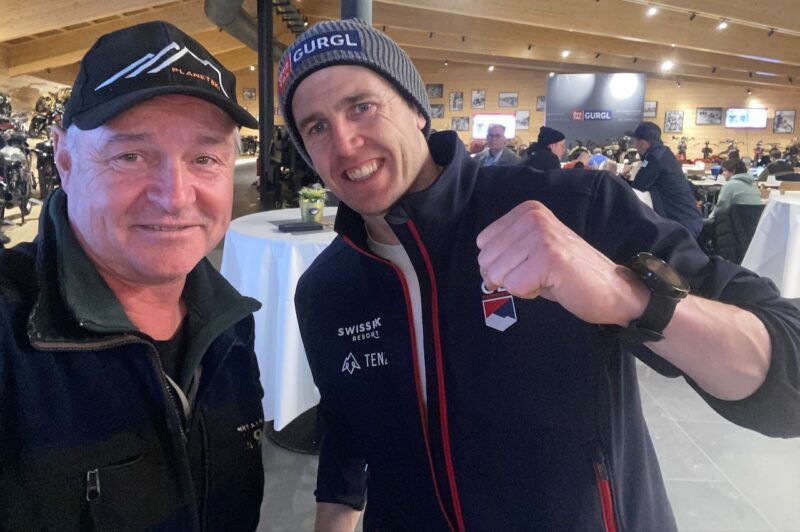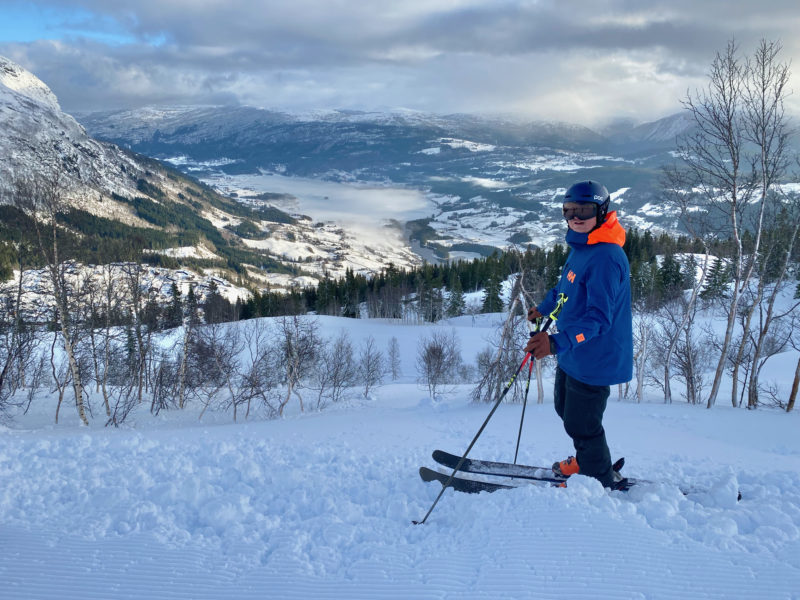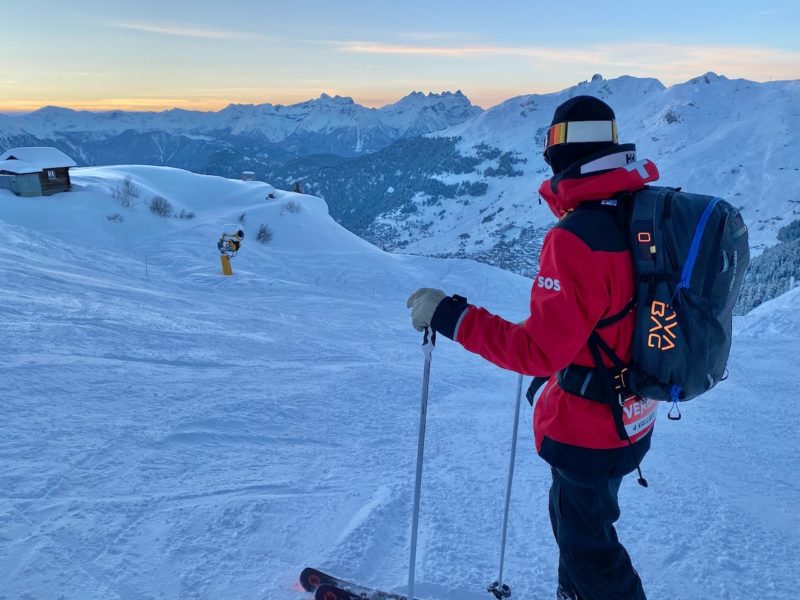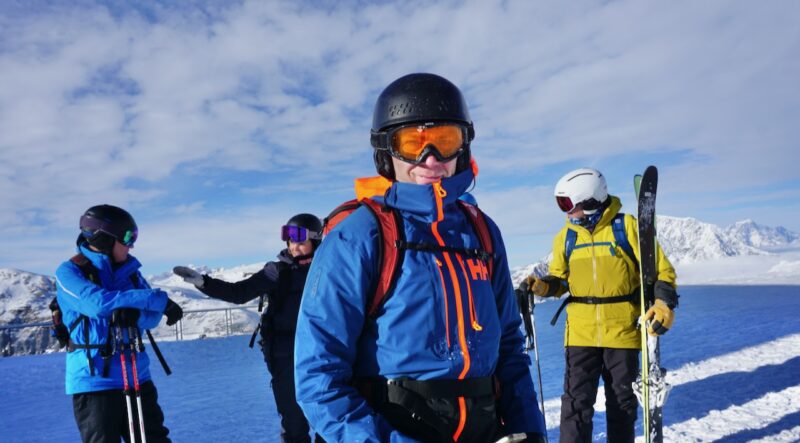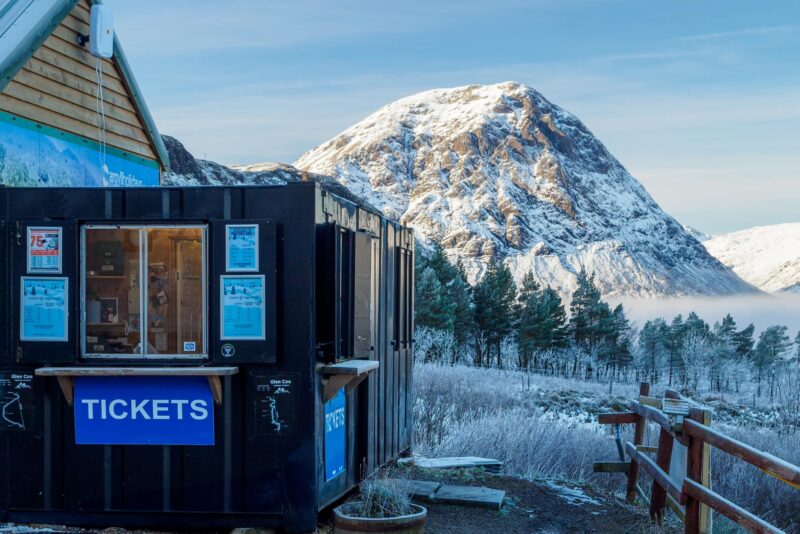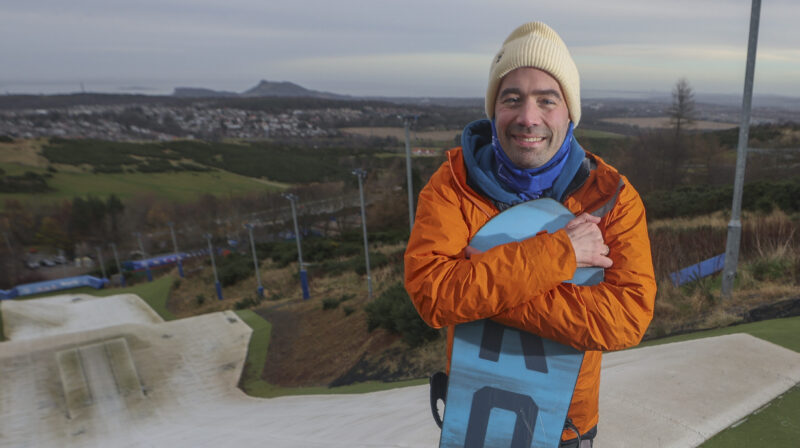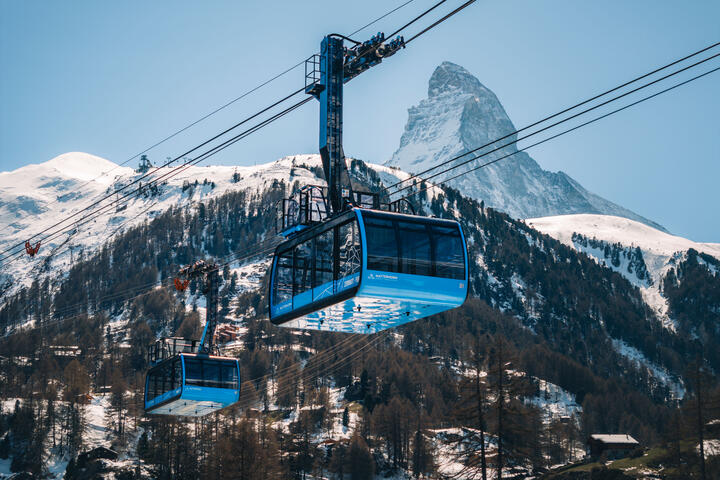Skiing in Norway: PlanetSKI reports from Narvik, inside the Arctic Circle
30th April 2022 | James Cove, Narvik, Northern Norway.
Last modified on May 5th, 2022
We expected some fabulous skiing, but the area has far more to offer than simply sliding around on snow. In our latest adventures we’re climbing aboard the Arctic Train to Riksgransen, snow mobiling in Sweden & visiting the fascinating Polar Park.
In Norway there is more to a ski holiday than simply skiing.
Much more.
In fact, the days off the ski slopes in Narvik can be as good as those on them.
In our last post from Narvik we reported from the ski slopes:
In our first post it was the spectacular flight into the Arctic Circle:
Now we are boarding the Arctic Train to head to the Swedish resort of Riksgransen to ride snowmobiles.

Snowmobiling in Riksgransen, Sweden. Image © PlanetSKI
Then returning to Norway to visit the Polar Park where there is a multitude of polar animals: wolves, bears, lynx, moose, arctic foxes and a wolverine.
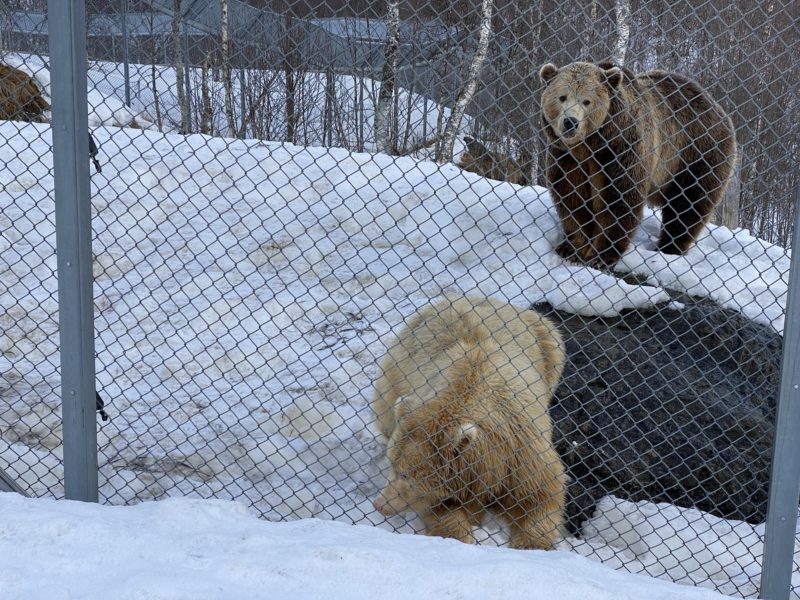
Polar Park, Norway. Image © PlanetSKI
Setting off on a train journey on Norway’s nothern-most railway inside the Arctic Circle is a special experience.
The Arctic Train runs on the 43km Ofoten line from Narvik in Norway, to Abisko in Sweden.
It goes via Bjorkliden, Katterjakk and Riksgransen.
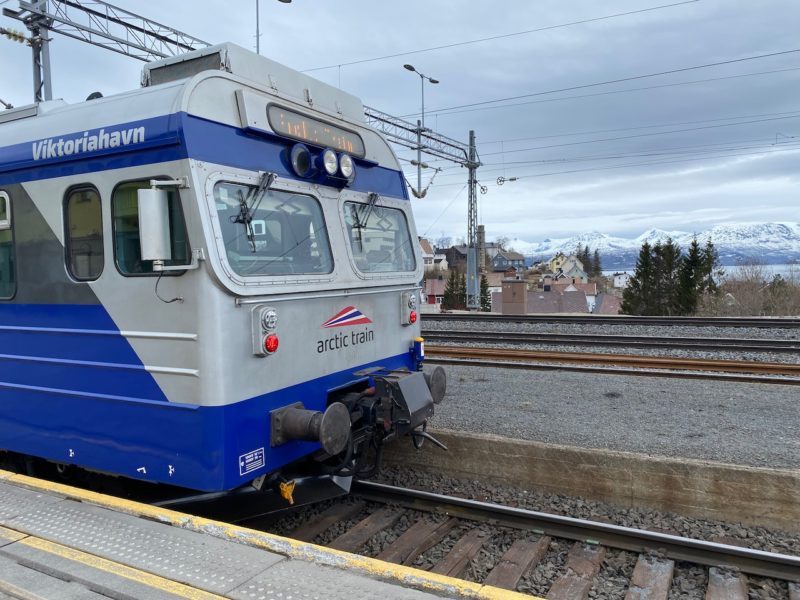
Arctic Train, Norway/Sweden. Image © PlanetSKI
The line opened in 1903 to give access for the iron ore deposits in northern Sweden to the ice-free port of Narvik in Norway.
Construction took place from the late 19th century into the early 20th century and engineers faced extreme challenges in terms of climate and logistics.
A total of more than 5,000 people were involved in the construction of the railway line.
See more here on its fascinating history: The Arctic Train on the Ofoten Line
There are 10-12 iron ore trains on the Ofoten line daily, they carry 68 wagons containing 100 tons of ore each.
That is enough iron for 68,000 cars.
In the railway’s 120 year history it has shipped more than 1 billion tons of iron ore.
The Arctic Train travels on the same line through a unique, beautiful and changing landscape from deep fjords to high alpine terrain.
As I peered out the window, I wondered what the view would be like from the driver’s carriage.
There was only one way to find out.
I walked up to the front of the train, asked the guard if it might be possible to take a few pictures from beside the driver.
Before I knew it the driver, Kent, invited me in and we got chatting.
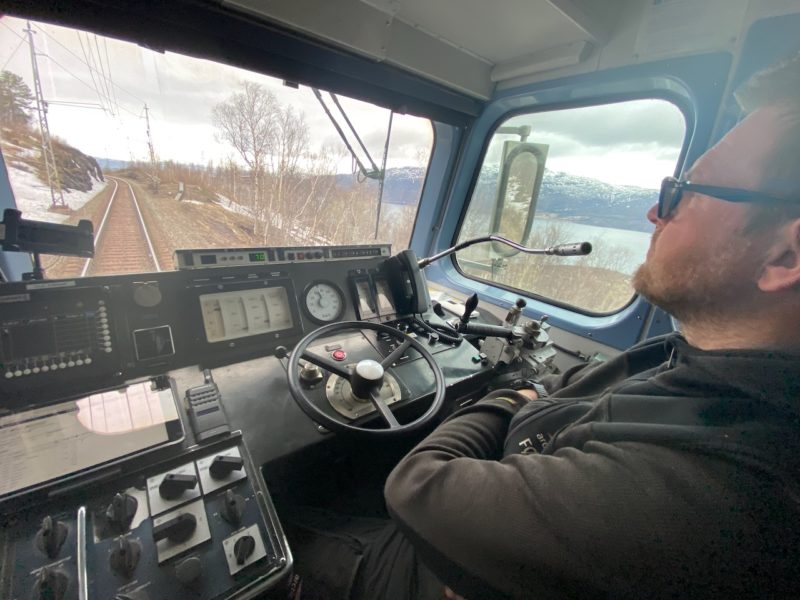
Arctic Train, Norway/Sweden. Image © PlanetSKI
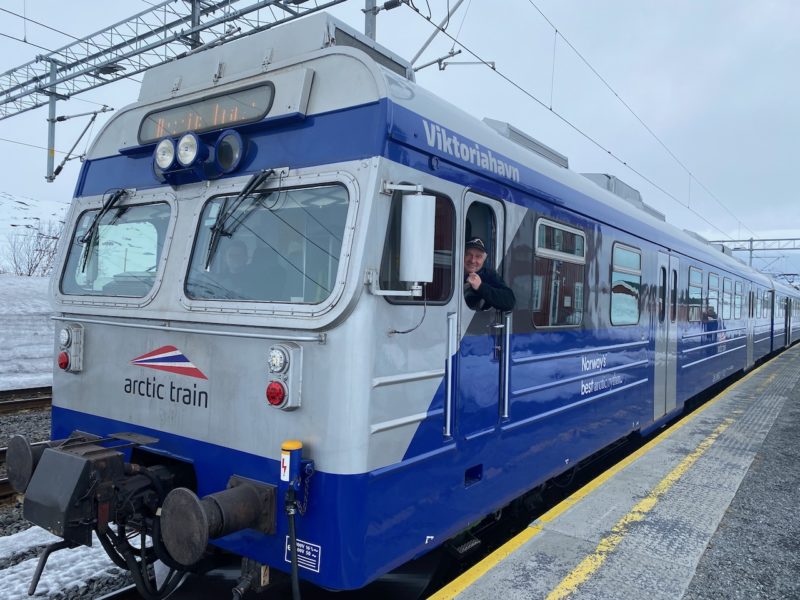
Narvik to Riksgransen. Image © PlanetSKI
I stayed up front for the entire journey there, and took the same position later on my way back.
A boyhood ambition was fulfilled.
The ride was simply stunning.
The line was fiercely fought over in 1940 and we shall be hearing more about that in my next blog as I look back to Narvik’s history during World War Two.
The Norway/Sweden border is 38kms from Narvik in one of the tunnels, and is marked accordingly.
Leaving Norway:
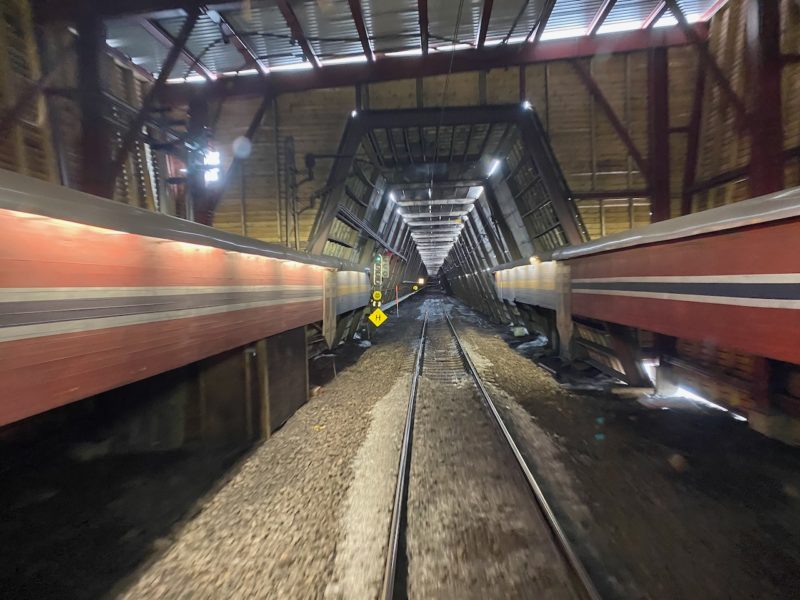
Arctic Train, Norway/Sweden. Image © PlanetSKI
Entering Sweden:
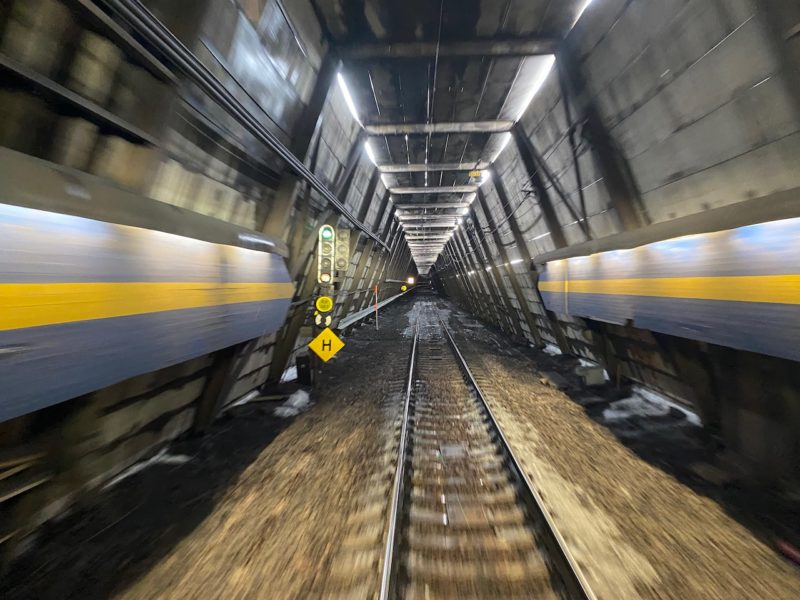
Arctic Train, Norway/Sweden. Image © PlanetSKI
And just when I thought things couldn’t get much better I was standing beside a 900cc mechanical beast in Riksgransen in Sweden with our guide explaining how to drive a snow mobile in the Arctic wilderness.
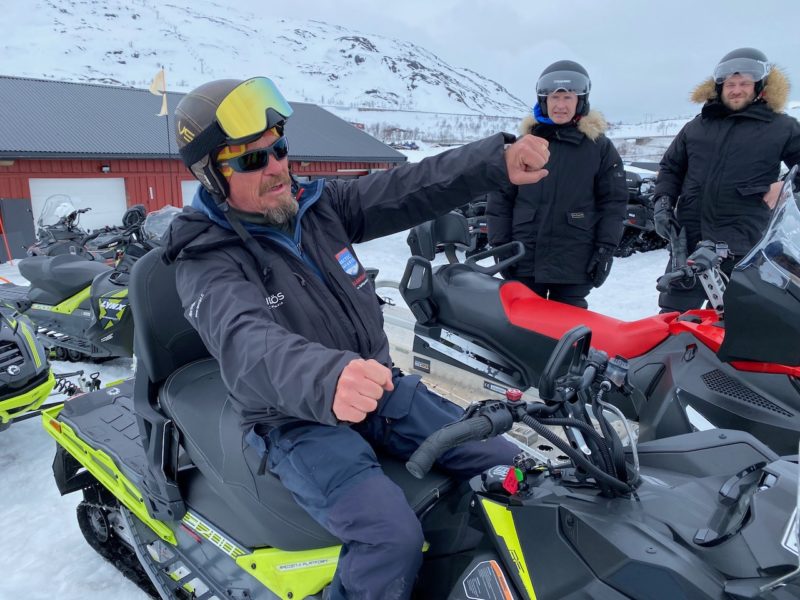
Snowmobiling in Riksgransen, Sweden. Image © PlanetSKI
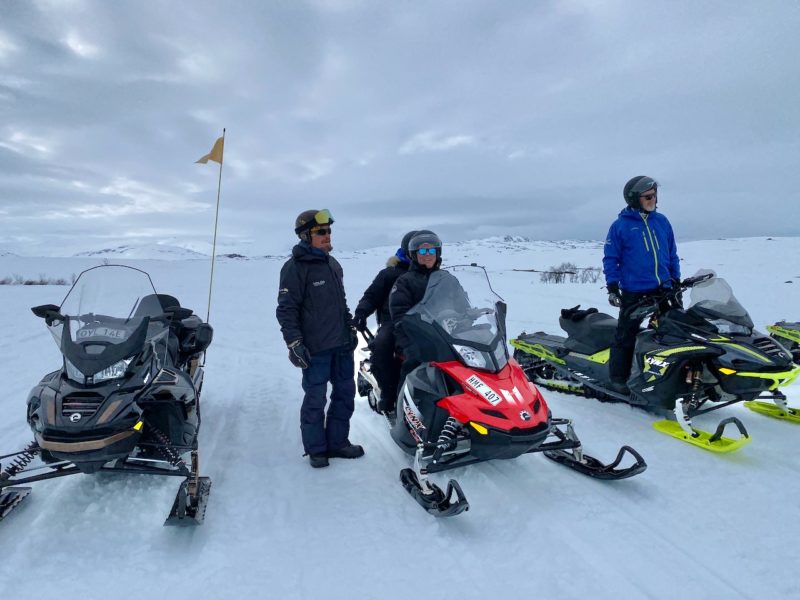
Snowmobiling in Riksgransen, Sweden. Image © PlanetSKI
There was some risk as we sped across the ice.
At this time of year the ice ranges in thickness from 20cm to 80cm.
It needs to be at least 15cm thick to take the weight of a snowmobile, so it was probably a good idea to choose the route carefully.
And not stop.
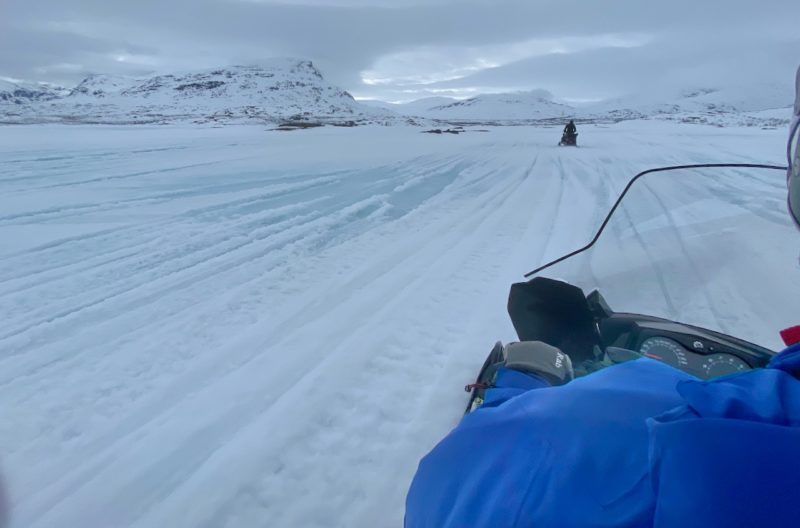
Snowmobiling in Riksgransen, Sweden. Image © PlanetSKI

Snowmobiling in Riksgransen, Sweden. Image © PlanetSKI

Snowmobiling in Riksgransen, Sweden. Image © PlanetSKI
The Arctic views were simply spectacular.
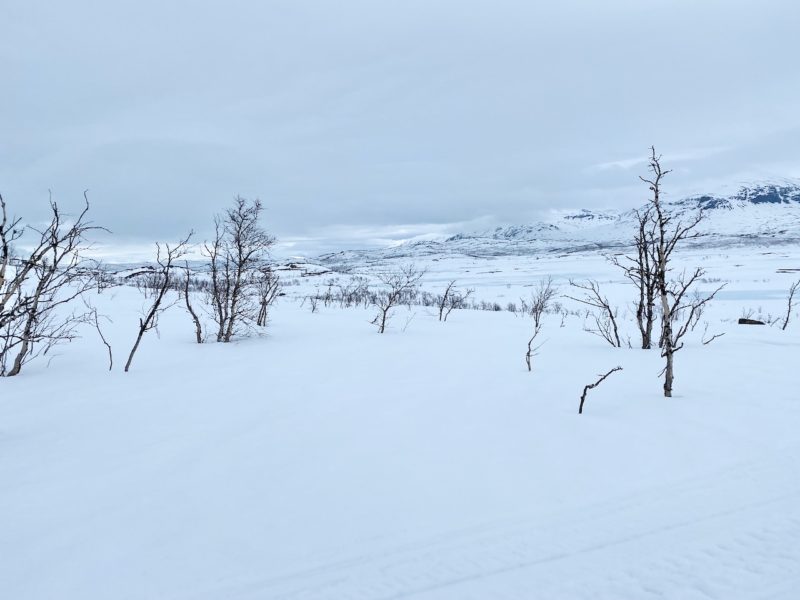
Snowmobiling in Riksgransen, Sweden. Image © PlanetSKI
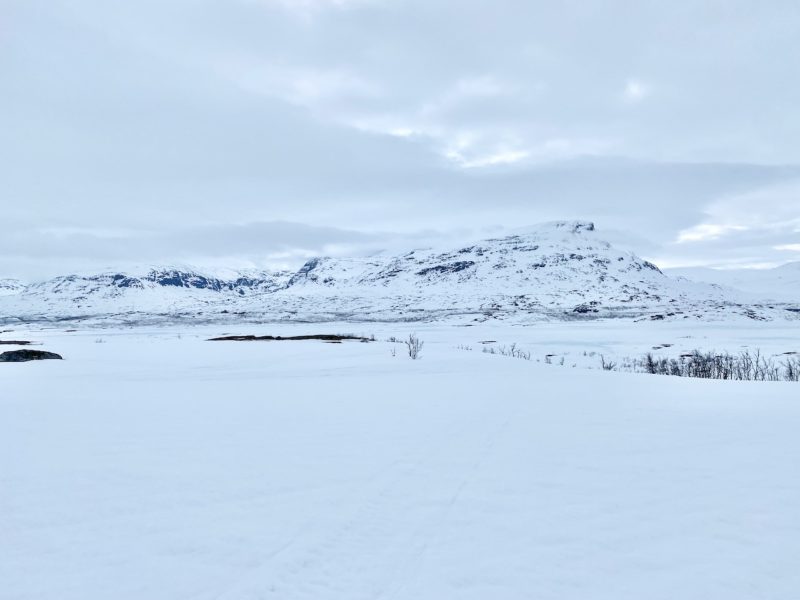
Snowmobiling in Riksgransen, Sweden. Image © PlanetSKI
In Norway snow mobiling and heliskiing are outlawed on environmental grounds – in Riksgransen in Sweden they are both allowed.
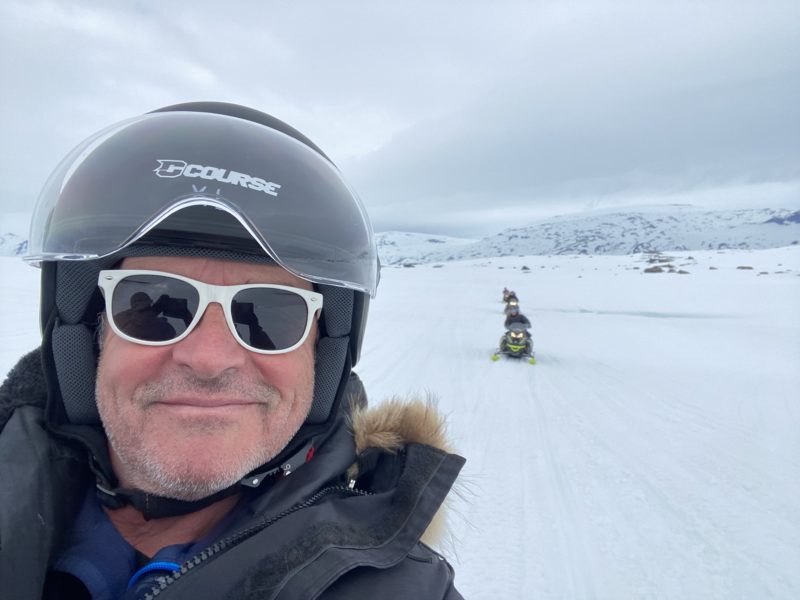
Snowmobiling in Riksgransen, Sweden. Image © PlanetSKI
“Back in the old days the machines were certainly less environmentally friendly, but now it is the same as driving a car,” claimed our guide.
“We will be gradually replacing out fleet with electric ones when they are available and that will likely be in a couple of years.”
I recorded the obligatory snow report from Riksgransen before jumping back on the Arctic Train to return to Narvik.
What awaited was yet another gem of an experience – a visit to the Polar Park.
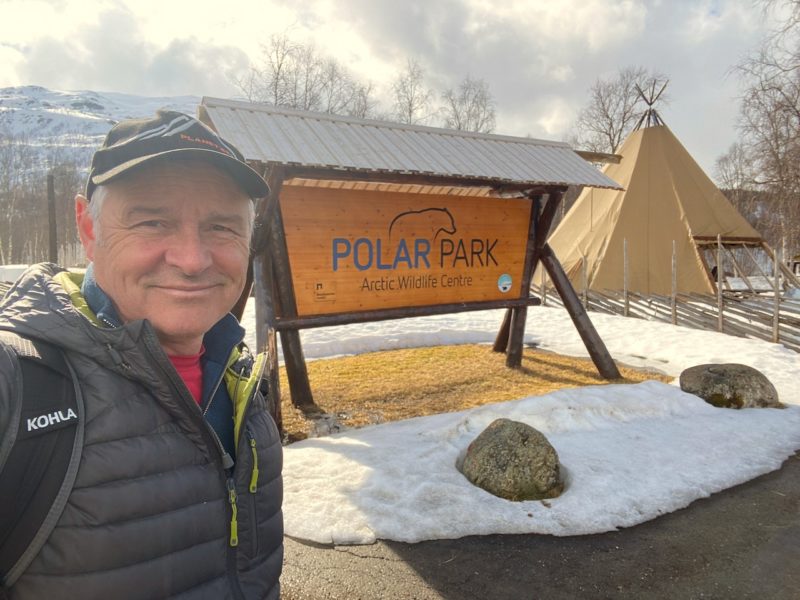
Polar Park Wildlife Foundation. Image © PlanetSKI
It is a centre dedicated to enhancing and improving animal welfare and educating humans about the animals and their habitats.
The undoubted stars of the Polar Park are the wolves.
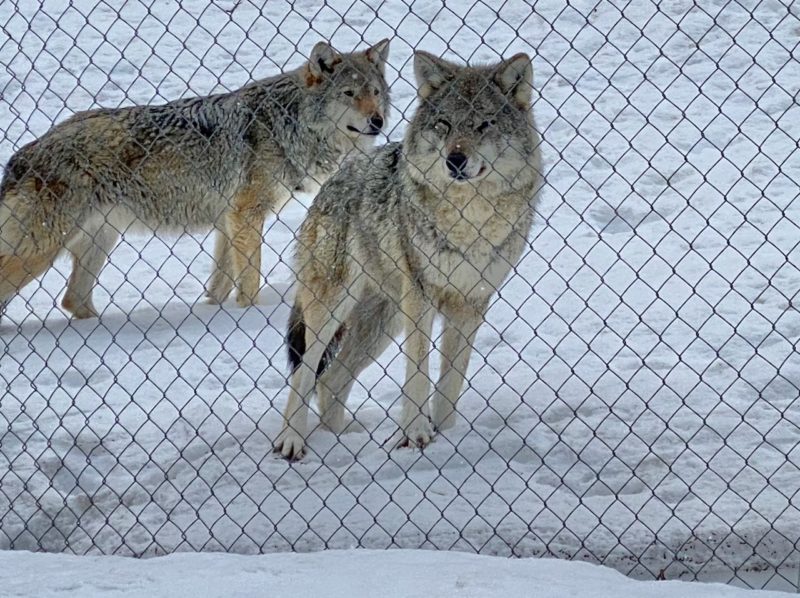
Polar Park Wildlife Foundation. Image © PlanetSKI
There are three females: Froya, Mant and Frigg, plus one male, Brage.
They were born in captivity and raised by their keepers.
The keepers lived with them for 3-months from birth, for 24-hours a day.
Eating and sleeping with them to gain their acceptance and trust.
One of the keepers is Ramone Pederson, she also howls with them.
And they howl back:
The wolves live in a large outdoor enclosure of 30,000 square meters.
Inside the enclosure is a luxury lodge where those with deep pockets (it costs up to £10,000 per night) can watch the wolves at closer quarters.
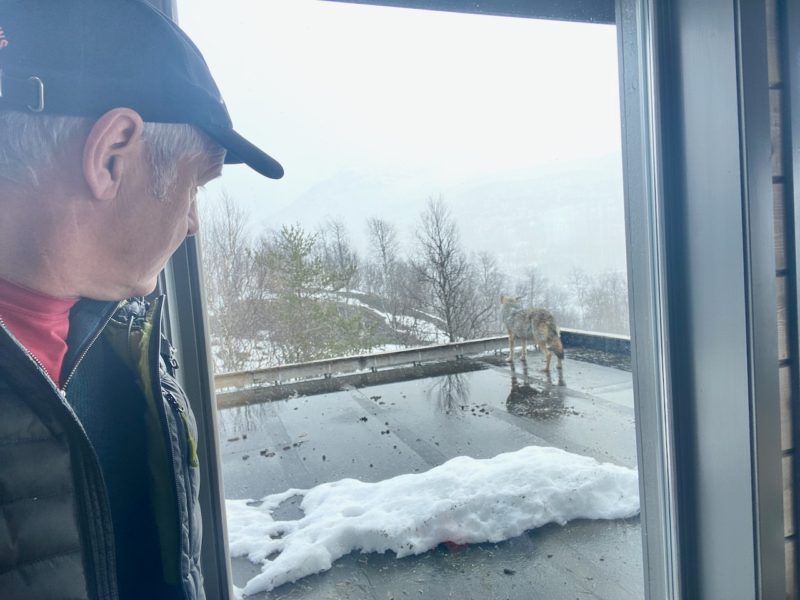
Polar Park Wildlife Foundation. Image © PlanetSKI
I suspect the guests check, double check and then check again that their bedroom windows are securely closed at night.
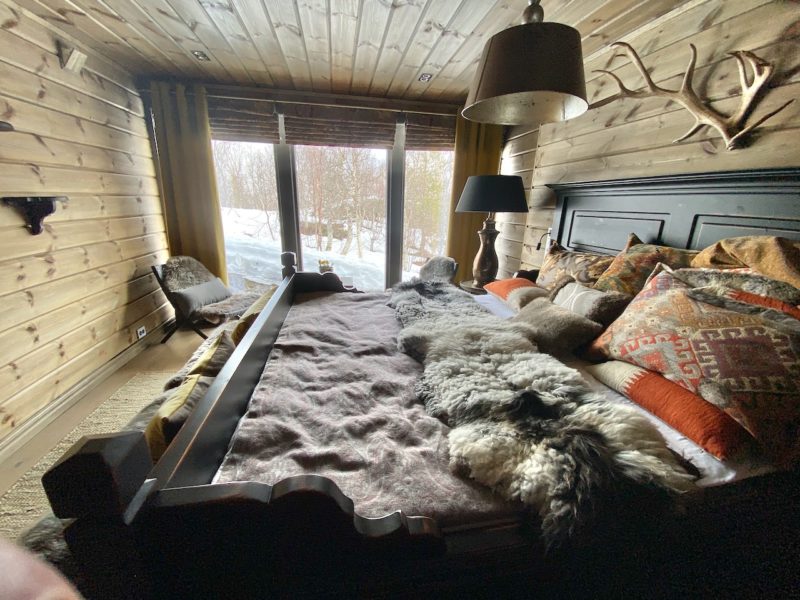
Polar Park Wildlife Foundation. Image © PlanetSKI
The Polar Park also has bears, lynx, moose, arctic foxes and a wolverine.

Polar Park, Norway. Image © PlanetSKI
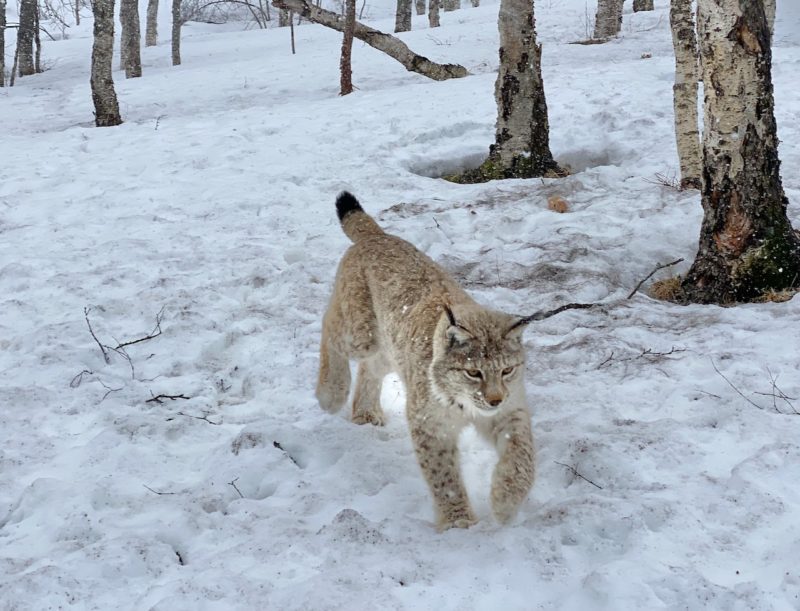
Polar Park Wildlife Foundation. Image © PlanetSKI
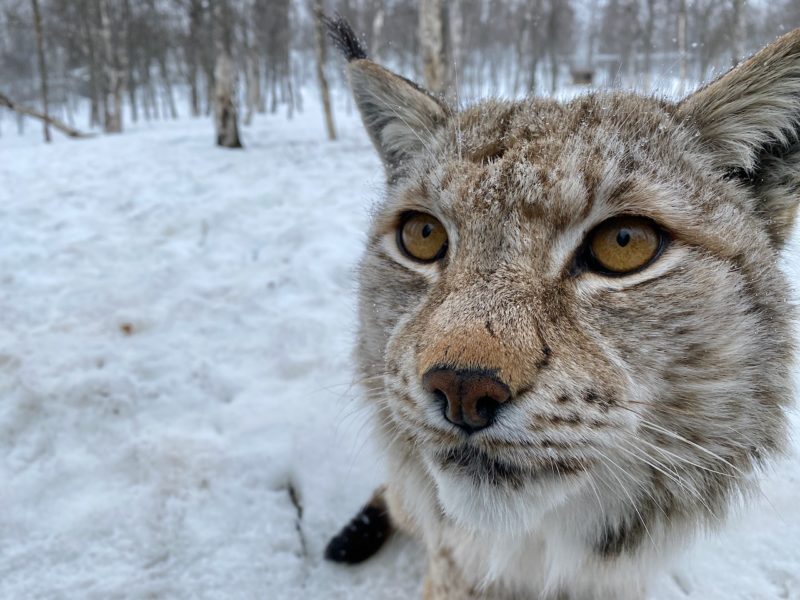
Polar Park Wildlife Foundation. Image © PlanetSKI
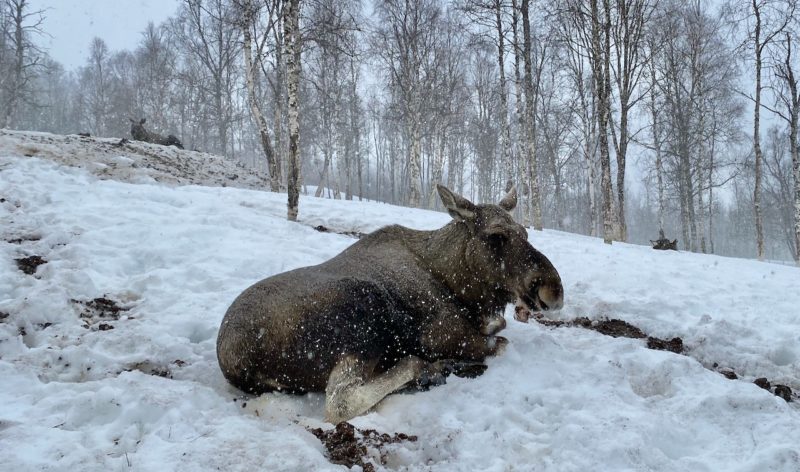
Polar Park Wildlife Foundation. Image © PlanetSKI
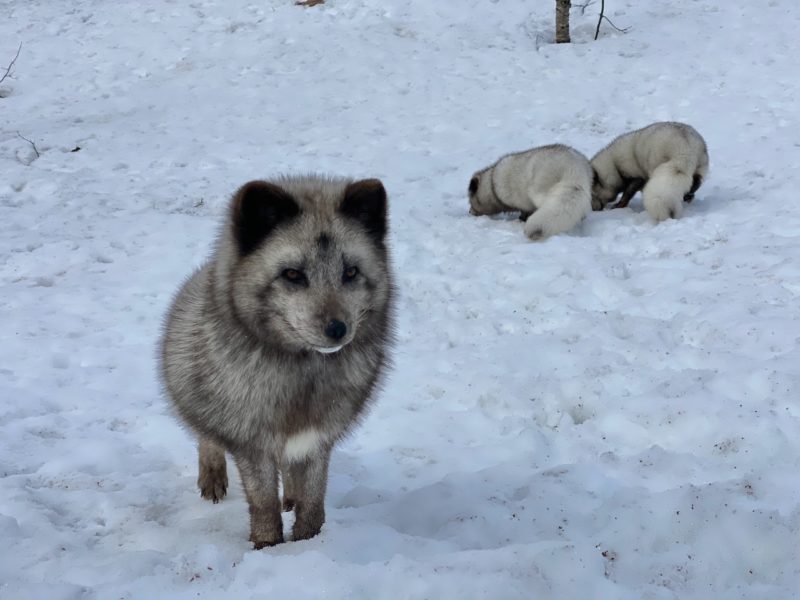
Polar Park Wildlife Foundation. Image © PlanetSKI
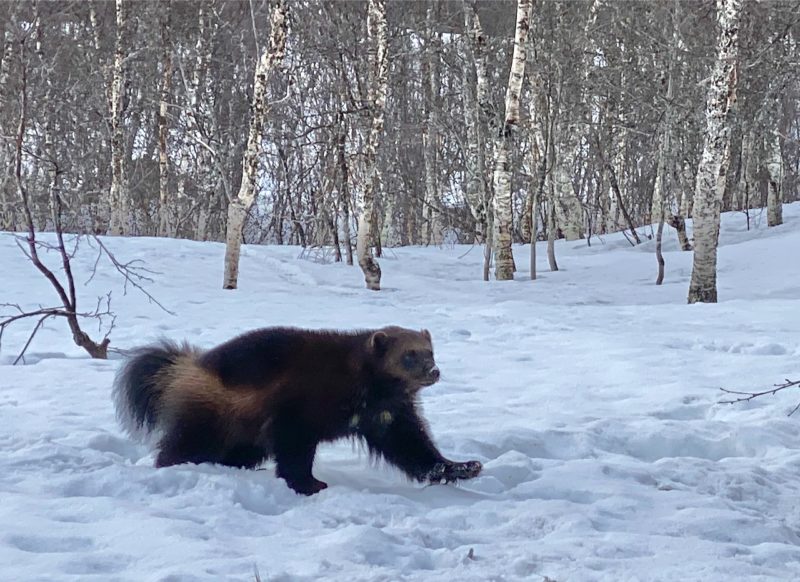
Polar Park Wildlife Foundation. Image © PlanetSKI
It is one of the most popular attractions in Northern Norway and sees 30,000 visitors per year.
In the off season we had the place to ourselves.
As the day ended it was back to Narvik and drinks at the Sky Bar of the Scandic Hotel in downtown Narvik.

Narvik, Norway. Image © PlanetSKI
Daylight turns to dusk at about 11pm at this time of year.
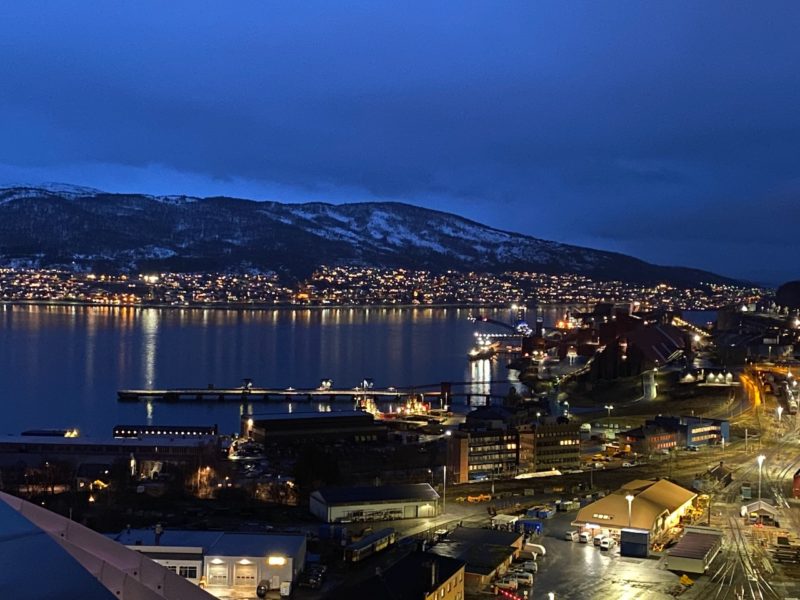
Narvik, Norway. Image © PlanetSKI
As I reflected on my day over a drink in the Sky Bar I tried to think of a better single day one could experience in the mountains while not actually putting a pair of skis on.
Nothing came immediately to mind.
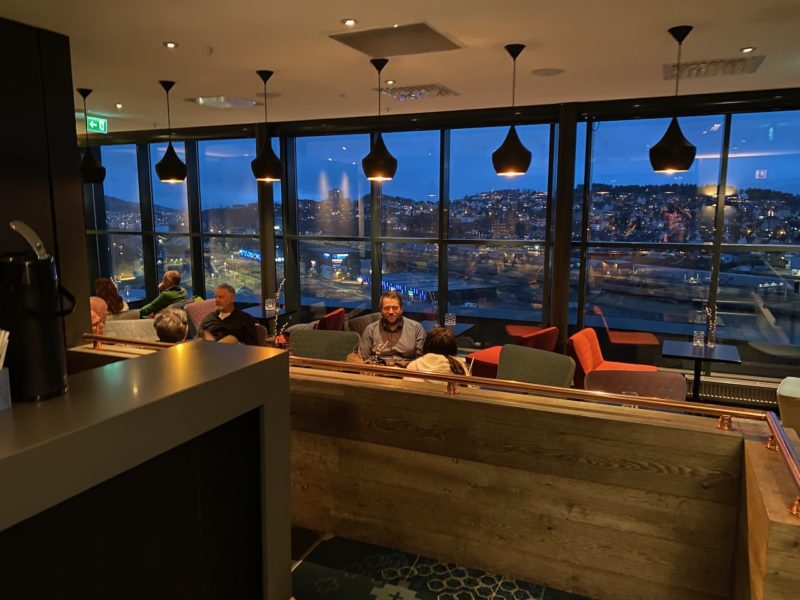
Narvik, Norway. Image © PlanetSKI

Narvik, Norway. Image © PlanetSKI
Further Information:
For more information on Narvik see here – Narvikfjellet
Holidays are offered by Norway – Home of Skiing.
Next I will be looking back into Narvik’s past, and ahead to its future.
Its fate in World War Two and its place in the military history books.
The Battles of Narvik remain the first significant naval battles of WW2 and the Narvik War Museum is a must-visit place.
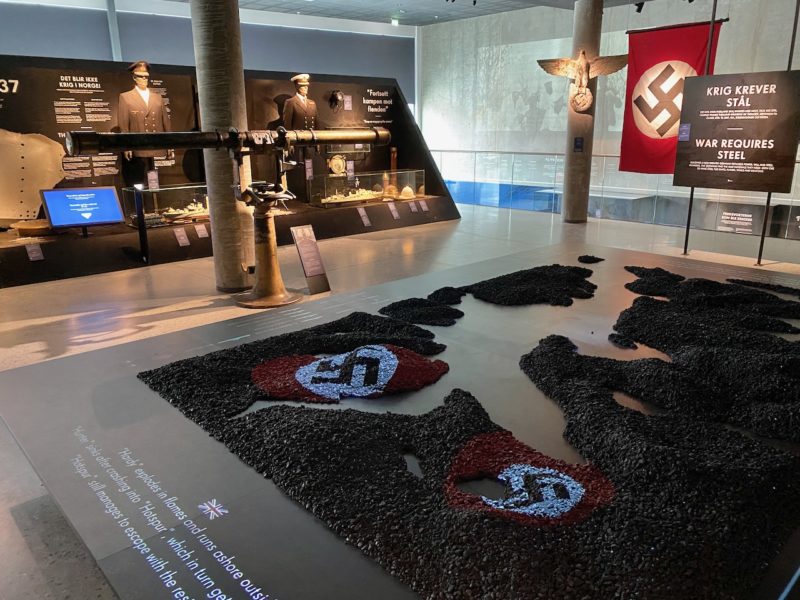
Narvik, Norway. Image © PlanetSKI
And I’ll be looking to the future as Narvik has big plans for the coming years with multiple improvements in the pipeline – new lifts, new hotels, some new slopes and a drive to upgrade.

Narvik, Norway. Image © PlanetSKI
It is bidding for the 2027 Alpine World Championships, and if successful then expect to hear more about Narvik.
Do check back….
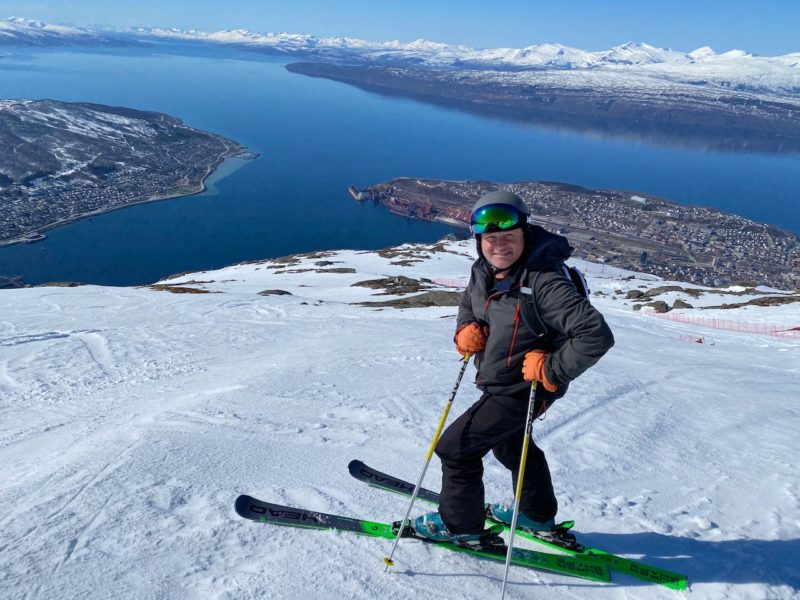
Narvik, Norway. Image © PlanetSKI
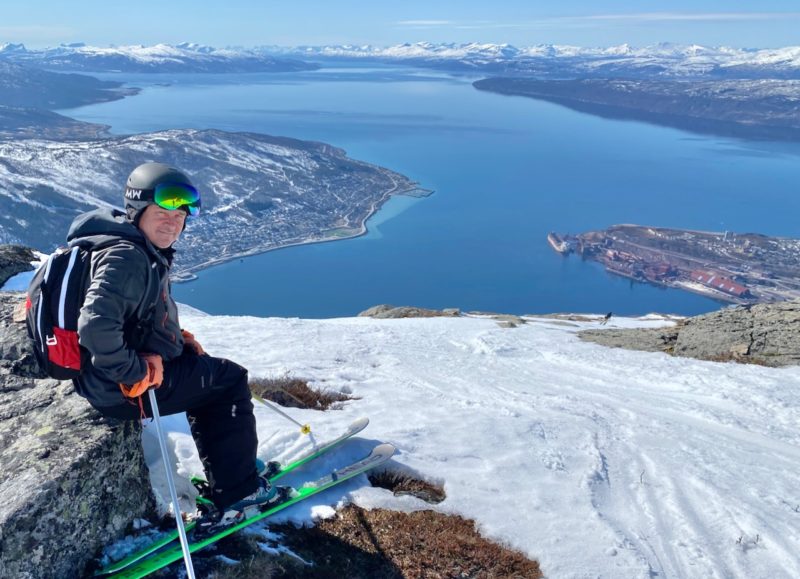
Narvik, Norway. Image c/o PlanetSKI.

